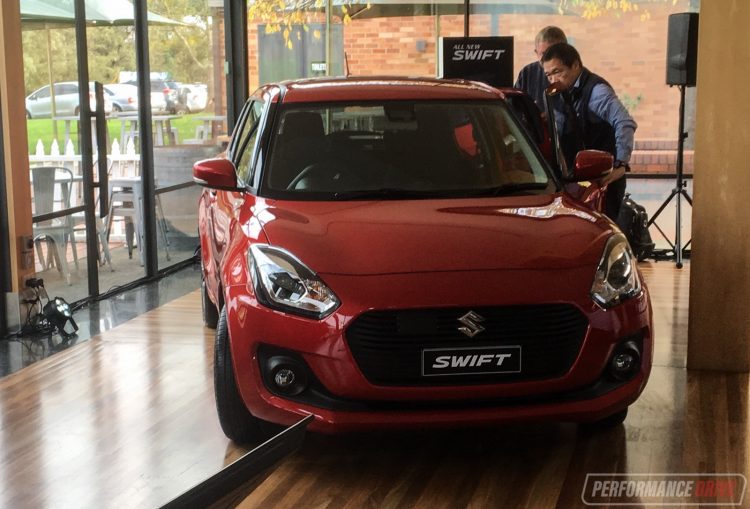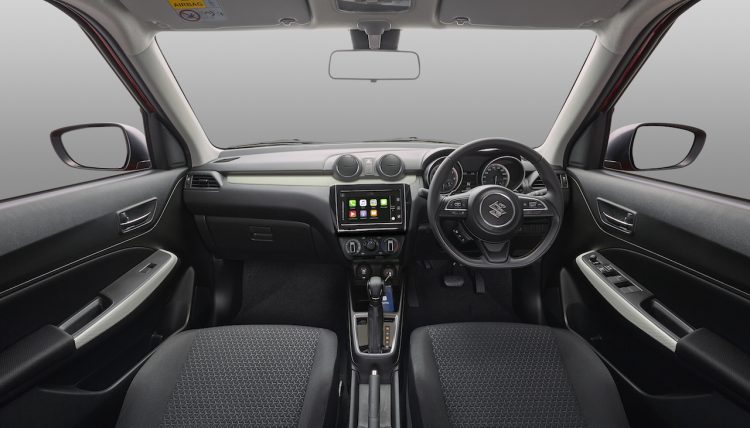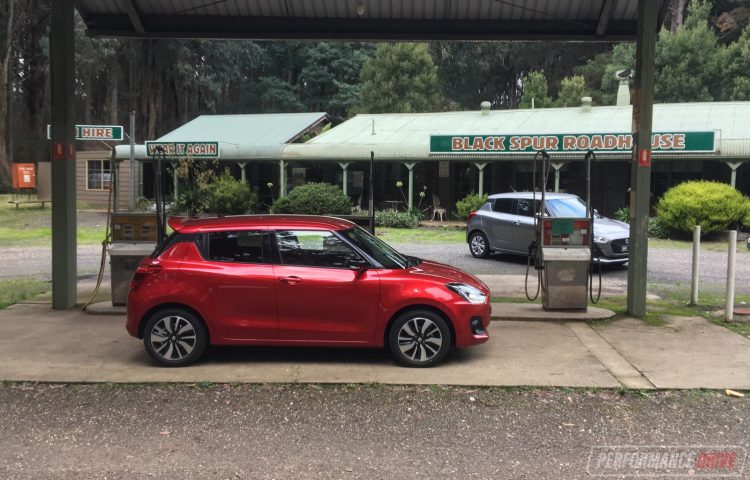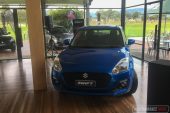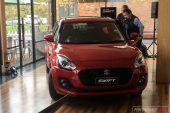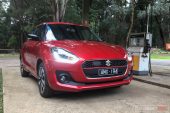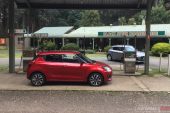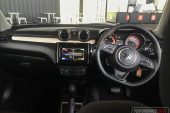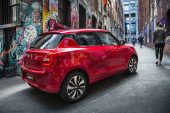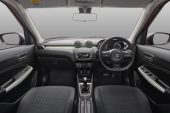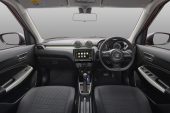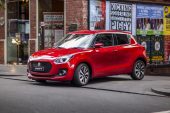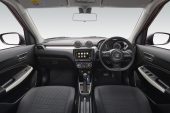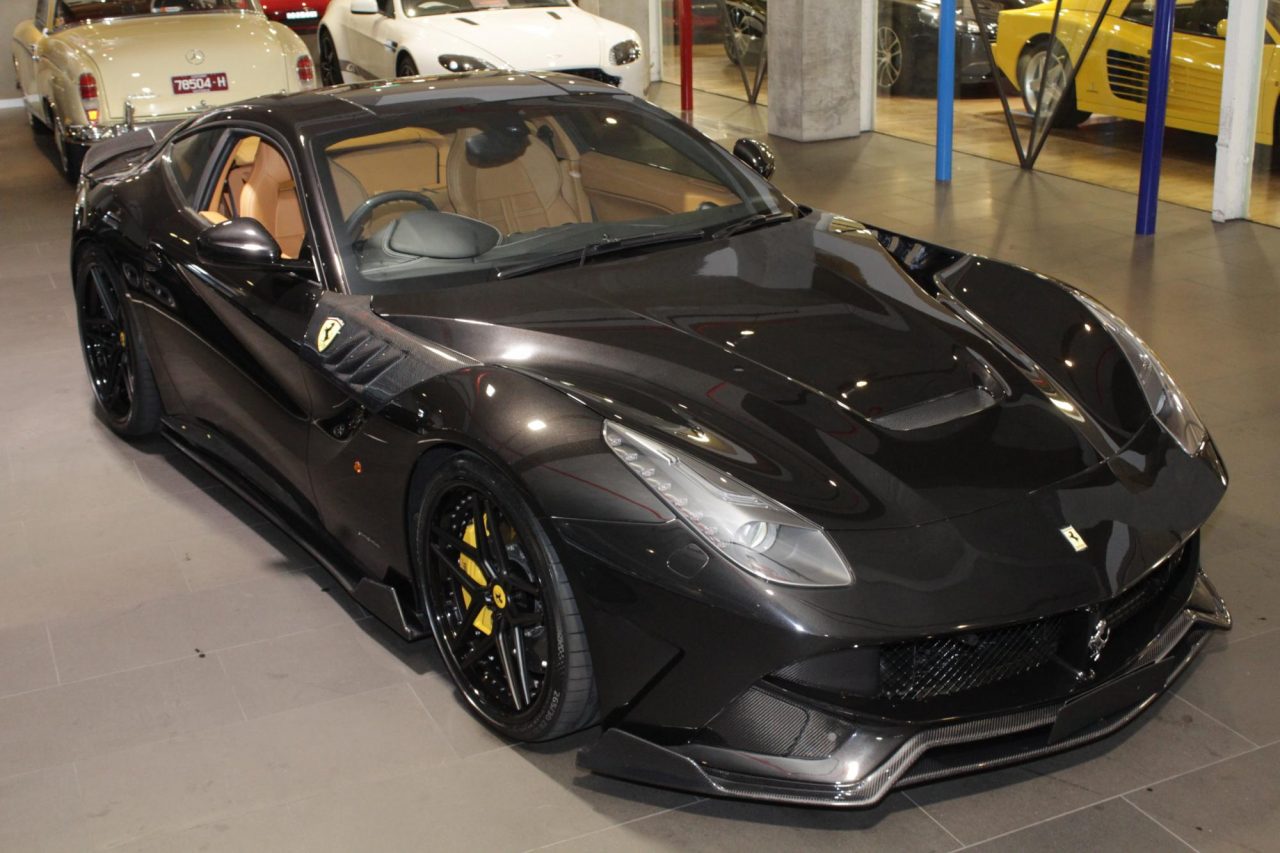Although the Suzuki Swift nameplate has been with us on-and-off since the 1980s, it’s the modern-era version that has defined the company since 2005. Now in its third-generation, the 2017 Swift migrates to a new ‘HEARTECT’ architecture, which manages to be more rigid and incorporate new safety features, while netting up to 130kg of weight loss compared with the outgoing Swift.
PerformanceDrive was invited to some of rural Victoria’s most sinewy and harrowing country roads to put the 2017 Swift through its paces, during the official national launch.
2017 Suzuki Swift – Introduction
First, an introduction. The styling continues the evolution that has carried across the previous two generations. This means almost Mini-esque appearance with blackened A-pillar and a distinctive, playful facade. While the links to its forebear are obvious, the new headlights and grille add a premium look and the rear door handles are integrated into a ‘floating’ C-pillar for a more nuanced appearance.
Dimensionally, it is 10mm shorter at 3840mm, 40mm wider at 1725mm, 15mm squatter at 1495mm, and on a 20mm longer wheelbase for slightly improved occupant room. The seats also sit lower for improved headroom and centre of gravity.
Suzuki is gunning for class honours with this car, aiming to be the best seller in the class. To that end, it has completely revamped the interior, with a new steering wheel, multimedia display incorporating smartphone mirroring (on some variants), navigation and reverse cam on most models.
2017 Suzuki Swift – Range
The range consists of the $15,990 GL manual with a double DIN stereo, the CVT-equipped GL Navigator from $17,990, with an optional safety pack for $1000 that includes first-in-class adaptive cruise control, lane departure warning, and autonomous emergency braking. These are huge additions for a car of this class.
The range-topping GLX Turbo incorporates these features and adds a 1.0-litre Boosterjet turbo three-cylinder engine and six-speed automatic with paddle shifters, priced from $22,990.
2017 Suzuki Swift – Facts and Figures
Engines are a 1.2-litre ‘Dualjet’ 68kW/120Nm attached to a five-speed manual or CVT auto, or a 1.0-litre Boosterjet three-banger turbo with 82kW and 160Nm.
Despite employing more high-tensile steel and reduced NVH, the new Swift weighs between 870kg and 918kg, making it comfortably the lightest in the B-segment class. An impressive feat considering the class firsts in active safety and stronger body.
Fuel efficiency ranges from 4.6L/100km for the GL manual to 5.1L/100km for the 1.0 GLX turbo. We will have to wait for a more extensive road test to verify the real-world expectation, but given our recent experience with Suzukis, we can attest its efficiency claims are some of the industry’s most accurate.
2017 Suzuki Swift – Drive
Onto the drive and the current class benchmark Mazda2 is the target to beat. We started with the base GL manual before jumping in a flagship GLX turbo for the return leg during the launch program.
The interior is a major improvement, giving a sense of solidity and precise build quality you typically only get with a Japanese-built car. Instrumentation is clear and remains visible regardless of the steering column’s position, with the proven infotainment system also quite easy to navigate and distraction-free.
Through twists and turns of various radius, corrugated and smooth as well as along loose surfaces the Swift surprised and delighted. Despite not having a local tuning program like, say, Hyundai, the chassis tune for the Swift seems just right for whatever is thrown its way. Steering is eminently more precise and talkative than other variants of this platform, too.
With consistent weighting and organic feel, you can get a good sense of the Swift’s grip reserves and power out of the apex as it sits flat and behaved. Its increased footprint granting it a confident feel that pushes it to the top of the field for dynamics. Is it good enough to topple Mazda2? We would have to drive them back to back to know for sure, but first signs are good.
The improvements in rigidity also result in a supple ride, well isolated from NVH or thudding. In fact, the only minor issue is the presence of wind noise from the sides.
With the 1.2-litre engine, the CVT auto is probably the transmission to pick. The five-speed manual is very easy to drive but perhaps lacks the mechanical connection and slickness of its arch-rival’s six-speed unit. The ratios also seem a bit tall for the tiny mill. The engine itself doesn’t ever feel strained, but you get the sense manual is only offered for a lower entry price, rather than keen drivers. Fear not, though, as the upcoming Swift Sport should be absolute dynamite.
Jumping into the higher-spec car with the turbo engine and there are noticeable differences. The engine is more subdued, yet has a more cultured tone as well as a richer well of torque from lower in the rev range. The six-speed auto with its paddle shifters does a fine job of keeping the engine on the boil and exploiting the feisty chassis. It can be a little bit too keen to upshift by itself in manual mode, but overall it’s a honey.
Can the Swift realise Suzuki’s goal of becoming the best-selling light car? It certainly has the right ingredients, the right look and the right drive. Class-leading safety features, improved accomodation and a peppy driving experience will help it achieve this, on top of strong brand recognition among young buyers. Stay tuned for more Swift news, and a more comprehensive road test soon.
